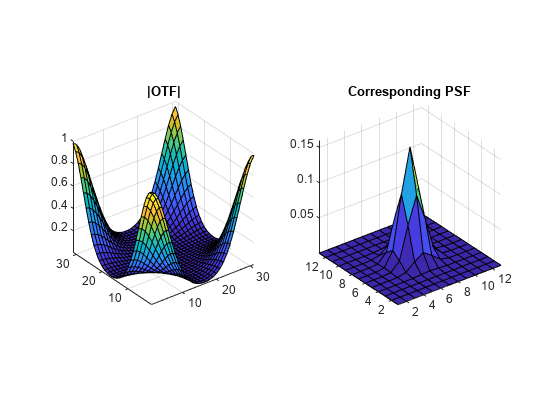otf2psf
Convert optical transfer function to point-spread function
Description
Examples
Input Arguments
Output Arguments
Tips
To center the PSF at the origin,
otf2psfcircularly shifts the values of the output array down (or to the right) until the (1,1) element reaches the central position, then it crops the result to match dimensions specified bysz.This function is used in image convolution and deconvolution when the operations involve the FFT.

